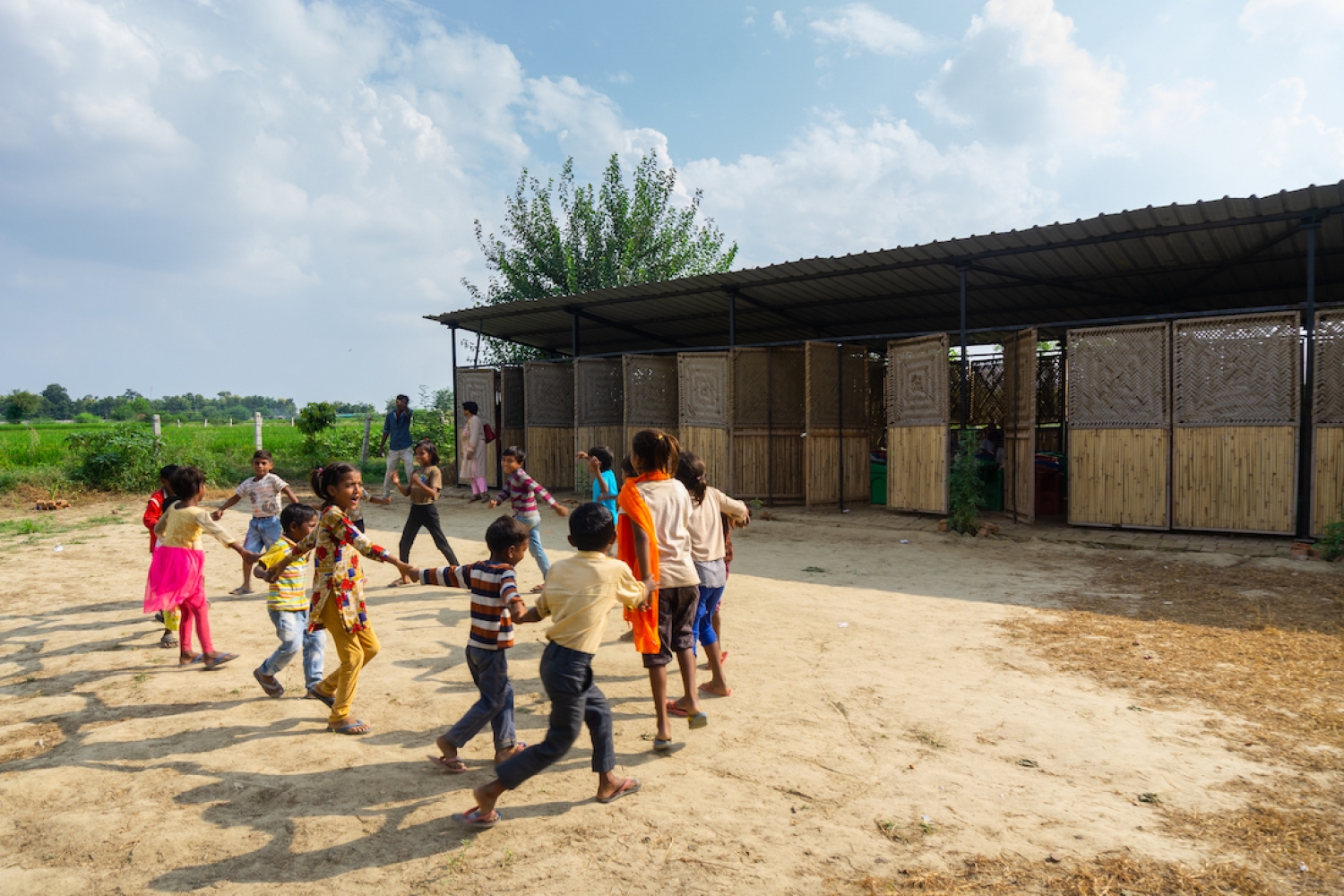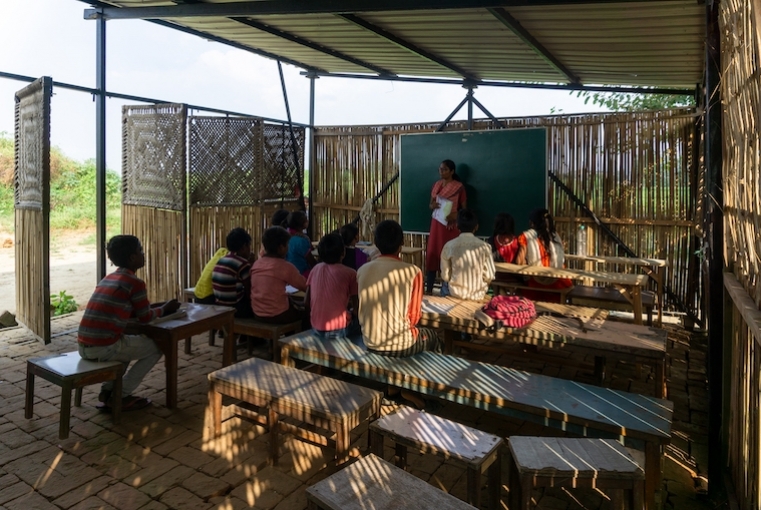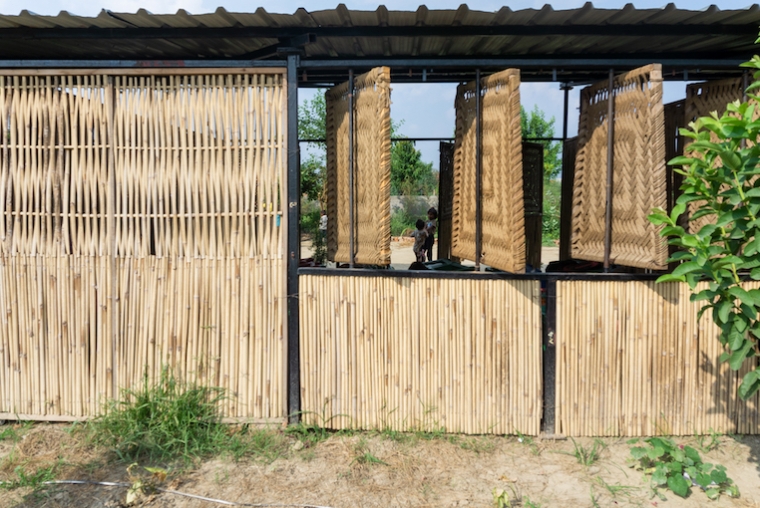

Planning to design a school with its deconstruction in mind sounds more absurd than anything. Yet this was the very brief with which Social Design Collaborative began their work on ModSkool. The instructions given by the school staff to the team, stemmed from their peculiar circumstances and an already demolished school building. Swati Janu, architect and founder of the collaborative explains their unconventional challenge, “The Delhi Development Authority dismantled the previous school building because the farming settlement, where the school is situated, is considered ‘illegal’ due to absence of land tenure, despite their contribution to food production in the city. India’s Right to Education Act makes education a fundamental right of every child between the age of six to fourteen and the community was able to get permission from the Delhi High Court to rebuild the school with the clause that it needed to be temporary.” ModSkool was constructed with the collaborative’s community partners The Child Trust and Van Phool School and the engineering firm, Vintech Consultants. Working on the project, the team also realised the novel concept of deconstructing the school would guard it from the heavy floods it inherits being on the Yamuna floodplains.

The conception of this collaborative came wholly from Swati’s personal motivation. A few years into her practice as a commercial architect she started dedicating her time to more socially relevant projects as she began questioning the role of architecture as a profession. “It bothered me that most people in our country did not have access to the services of a designer or architect. Eventually it became clear to me that collectives can be powerful, especially if they rely on interdisciplinary collaboration. I learnt that design could solve a lot of problems.” Thus, it became vital to engage with human rights lawyers, social workers and activists to develop a cross disciplinary ecosystem. Swati’s intent with the collaborative was to break apart the image of a solitary, self-made architect, dressed in black, “I wanted to challenge the dominant narrative of the architect as heroic and mostlymale.”
For the school the team used locally available materials that were economically and environmentally viable. Swati elucidates, “Farmers live very lightly on the land, with almost a zero-carbon footprint.” The collaborative learnt and emulated this very practice to construct the unique school that belonged solely to the community. Going forward, as the school had to face relocation, the design evolved with the context; the team refurbished the doors and windows with the traditional cot ‘charpai’ weave, a craft that hails from and is typical to the area. Swati also asserts, “The idea came about after we learnt more about the critical role played by the kind of school that we were designing for, in providing access to education. We realised that such a school that is easy to build / dismantle would play a very important role in bridging access to the formal education system in our country.”

The collaborative’s involvement with ModSkool wasn’t all smooth sailing, one of their primary struggles while building the school was the erratic nature of the farming community’s tenure and land ownership. “There was always the fear that we might be asked to stop building if the school did not seem ‘temporary’ enough. Delhi’s heat can be quite insufferable, since there was no access to running water or electricity, we had to organise for these things.” She recalls a clamorous generator that had to be hauled on a tractor every time the team needed to use tools that required power.
Currently channeling their effort at the intersection of urban development and policy, the team at the Social Design Collaborative wants to build more such community level schools. Step by step the team is focused on changing the city poised for a better future.
This article is an all exclusive from our Bookazine. To read more such articles grab your copy here.
Words Unnati Saini
Photography Suryan/Dang